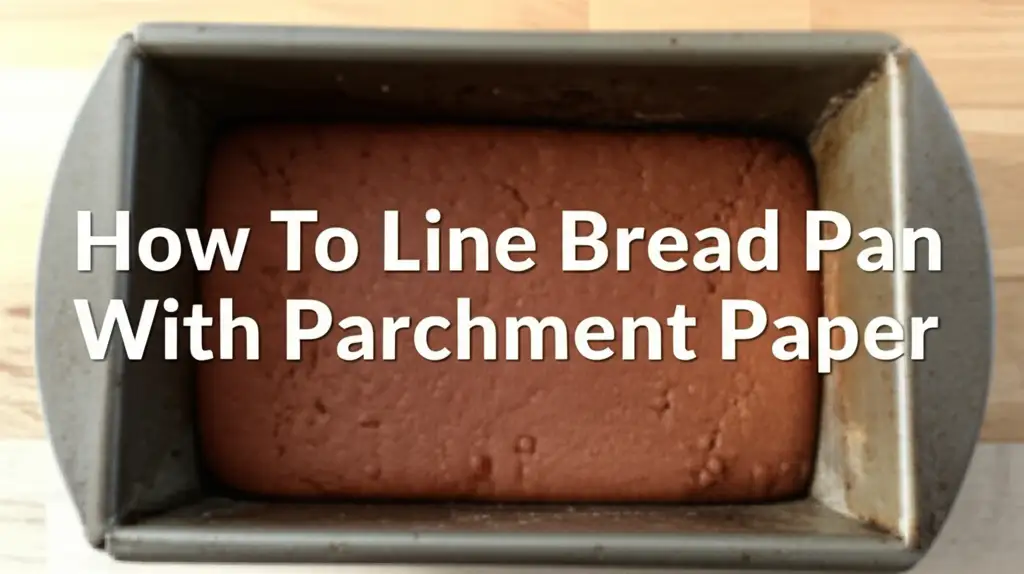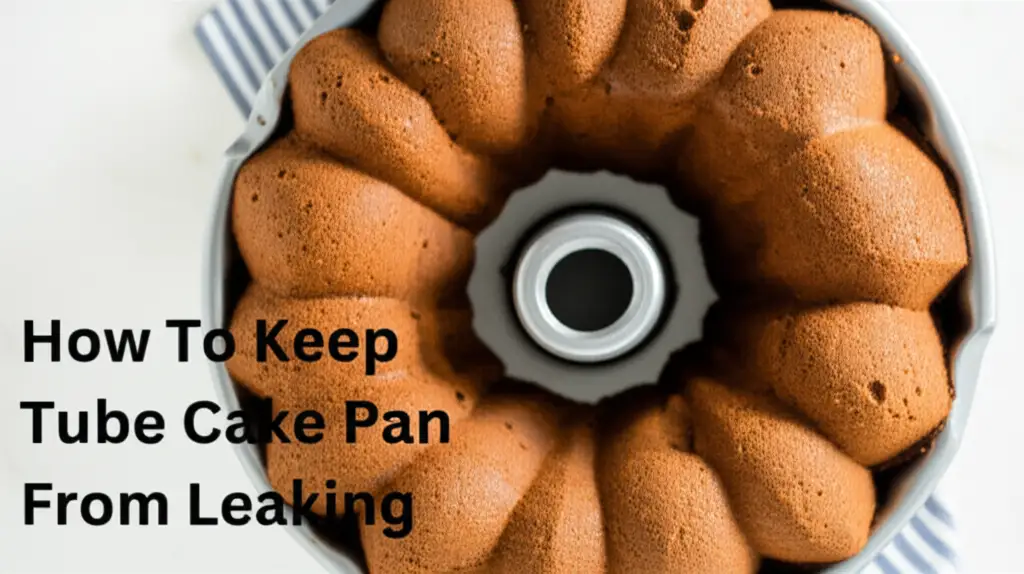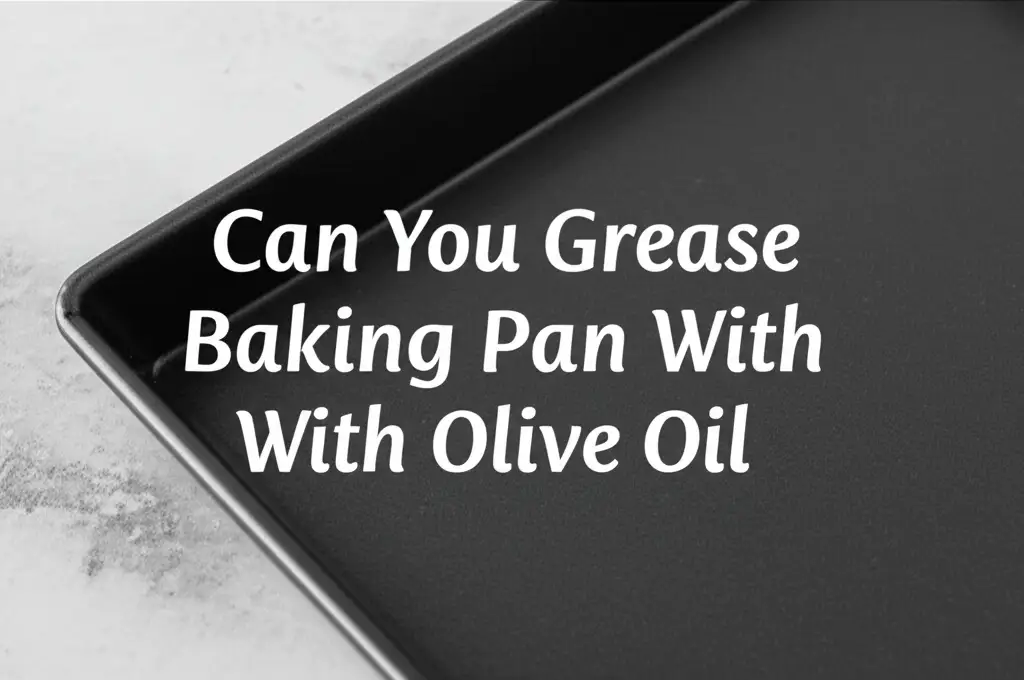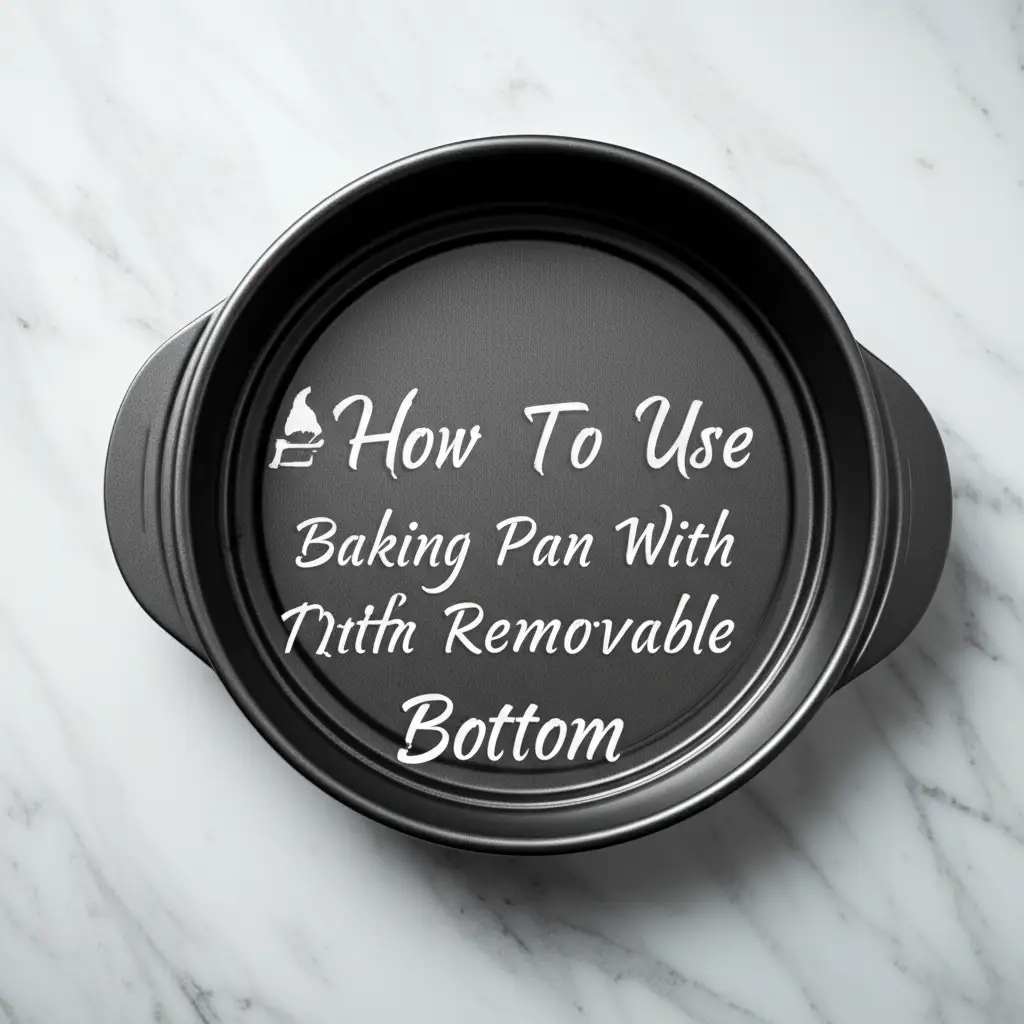· Katria Melrose · Baking Essentials · 14 min read
Can I Use Non Stick Pan For Chiffon Cake
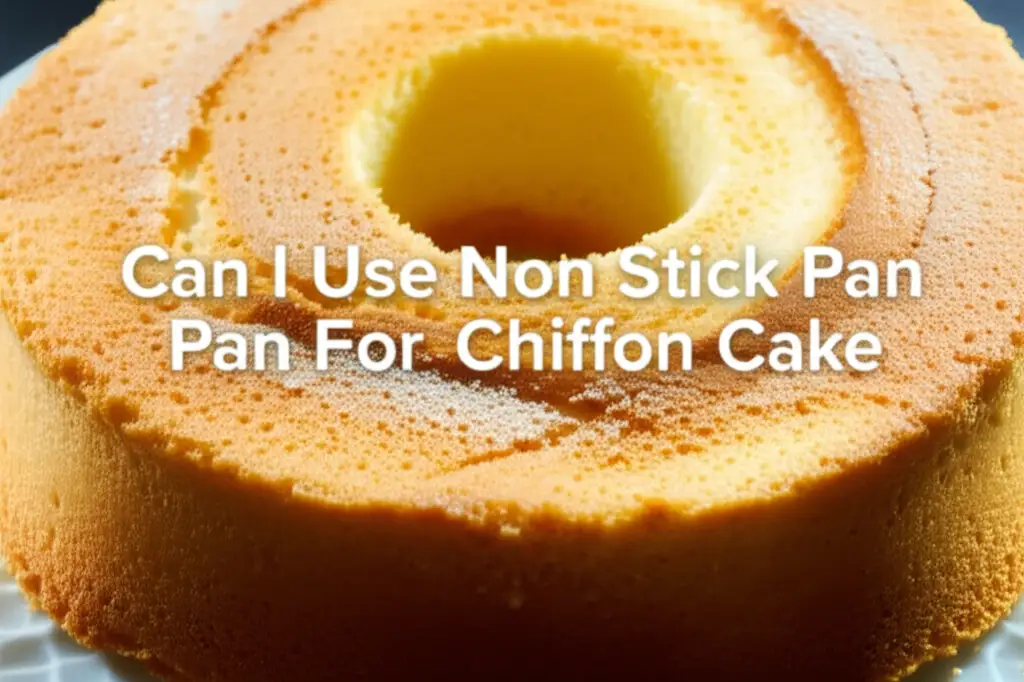
The Truth About Non-Stick Pans and Chiffon Cake Baking
Imagine spending hours in your kitchen, carefully separating egg whites, whipping them to stiff peaks, and gently folding in the batter for a delicate chiffon cake. You pour the airy mixture into your favorite non-stick pan, anticipating a light, cloud-like dessert. Then, after baking and cooling, your cake deflates, shrinks, or collapses. If this sounds familiar, you are not alone. Many bakers wonder, “Can I use non-stick pan for chiffon cake?” The answer might surprise you, and it is crucial for mastering this beloved dessert.
Baking a perfect chiffon cake relies on a very specific interaction between the batter and the pan. Unlike denser cakes that need to release cleanly, chiffon cake requires a pan that provides traction for its delicate structure to climb and set. A non-stick surface works against this fundamental need. This article explores why non-stick pans are unsuitable for chiffon cake, the science behind chiffon’s unique rise, and what kind of pan you should use instead. We will also cover proper pan preparation and essential tips for achieving that signature tall, fluffy chiffon. Get ready to transform your chiffon cake baking from frustrating collapses to triumphant rises.
Takeaway: Baking Chiffon Cake in a Non-Stick Pan
- Avoid Non-Stick Pans: Chiffon cake batter needs to cling to the sides of the pan to rise properly.
- Choose Bare Aluminum: Use an ungreased, unlined aluminum tube pan for the best results.
- Cool Upside Down: Invert the pan immediately after baking to prevent deflation.
- Understand the Science: The cake’s structure relies on the egg white foam attaching to the pan.
Using a non-stick pan for chiffon cake is generally not recommended. Chiffon cake batter requires an ungreased surface to grip and climb the sides of the pan as it bakes. This crucial adhesion allows the cake to achieve its characteristic tall, airy structure and prevents it from collapsing during baking and cooling. Non-stick surfaces prevent this necessary interaction.
Why Chiffon Cake Batter Needs to “Cling”
Chiffon cake is a unique creation, blending elements of a foam cake (like angel food cake) and a butter cake. Its signature lightness comes from whipped egg whites, which create a stable foam that traps air. When you pour this airy batter into a pan and bake it, the heat causes the trapped air to expand, and the cake begins to rise. This rise is not just about the leavening agents; it also depends on the batter’s ability to climb.
As the cake bakes, the batter sets from the outside in. The delicate cell walls of the expanded egg white foam need something to grip onto. If the sides of the pan are slick, the batter cannot get the necessary traction. Think of it like trying to climb a slippery wall. The batter tries to expand upwards, but without a rough surface to anchor itself, it slides back down. This lack of grip leads to a dense, short cake, or worse, one that collapses dramatically upon cooling. A good chiffon cake pan becomes an integral part of the cake’s structural support system.
The Problem with Non-Stick Surfaces for Chiffon Cake
Non-stick coatings, while excellent for preventing sticking with most foods, are the arch-nemesis of chiffon cake. The entire purpose of a non-stick surface is to prevent adhesion, which is exactly what chiffon cake needs. When you use a non-stick pan, the cake batter cannot “climb” the sides. It bakes, expands, and then often peels away from the slick surface prematurely.
This premature release means the cake loses its support structure. The delicate, expanding foam cannot hold its shape without the pan’s help. Instead of setting into a tall, airy cylinder, the cake either bakes up short and squat, or it rises beautifully in the oven only to shrink back significantly, or even collapse, as it cools. The texture also suffers, becoming dense and sometimes rubbery instead of light and tender. For home bakers wondering about their general non-stick pan’s condition, understand that for chiffon, any degree of non-stick property works against your goal. Using a pan designed to prevent sticking means you are fighting an uphill battle with the very physics of chiffon baking.
Ideal Pans for Perfect Chiffon Cake
For a truly perfect chiffon cake, you need a pan that encourages adhesion, not prevents it. The undisputed champion is an ungreased, unlined aluminum tube pan with a removable bottom and “feet.” This specific design serves multiple critical functions that contribute to chiffon’s success.
- Bare Aluminum: Aluminum provides the ideal rough surface for the batter to cling to. It conducts heat evenly, ensuring the cake bakes consistently. Unlike a pan you might grease to make cake not stick to an aluminum pan, a chiffon pan must be kept completely bare.
- Tube Pan Design: The central tube allows heat to penetrate the cake from the middle as well as the outside. This promotes even baking and ensures the center cooks through at the same rate as the edges. Without the tube, the center of a tall, deep cake might remain undercooked while the outside burns.
- Removable Bottom: This feature is essential for cooling and removing the cake. Once baked, the cake is cooled upside down, often suspended by the pan’s “feet.” When completely cool, you can easily push the bottom up, separating the cake without tearing its delicate structure. This is different from how you might get cake out of other cake pans without breaking.
- “Feet” for Cooling: Many chiffon cake pans have small metal “feet” or prongs around the rim. These allow you to invert the hot cake immediately after baking, suspending it above the counter. This upside-down cooling prevents the cake from collapsing under its own weight as it transitions from hot, airy foam to a stable, set cake. The steam escapes, and the structure solidifies without compressing.
While silicone pans can be versatile, they also tend to be non-stick. They lack the rigid structure and the crucial gripping surface needed for chiffon. Even if you consider using a silicone cake pan in an air fryer for other recipes, avoid them for chiffon cake.
Preparing Your Chiffon Cake Pan (The Right Way)
Preparing a chiffon cake pan is counter-intuitive if you are used to baking other types of cakes. For almost every other cake recipe, you grease and flour the pan to prevent sticking. For chiffon cake, you must do the exact opposite. Do not grease the pan. Do not flour the pan. Do not line it with parchment paper. The pan must be completely bare, clean, and dry.
Any form of grease, flour, or parchment will create a barrier between the delicate batter and the pan’s surface. This barrier prevents the cake from clinging, which is vital for its rise. The cake needs to stick to the pan as it bakes and cools upside down. It will only release easily once it is completely cool and the structure is fully set.
To prepare your pan:
- Wash thoroughly: Ensure there are no grease residues from previous baking.
- Dry completely: Water can also interfere with adhesion.
- Assemble (if removable bottom): Make sure the bottom is securely in place.
- Measure (if unsure): Knowing how to tell what size your cake pan is ensures you use the correct amount of batter for the pan’s volume. Using the right size pan prevents overflow or under-filling, which impacts rise.
This simple non-preparation is a critical step that many new chiffon bakers overlook, leading to disappointing results. Trust the process; a bare pan is the best pan for chiffon.
Understanding Chiffon Cake’s Unique Chemistry
Baking a chiffon cake is as much about chemistry as it is about cooking. The magic of chiffon lies in its two distinct components: a rich batter containing egg yolks, flour, sugar, oil, and liquid; and a meringue made from whipped egg whites and sugar. These two components are gently folded together, creating a light, aerated batter.
When this batter enters the oven, several reactions occur:
- Expansion of Air: The air trapped in the meringue, along with carbon dioxide from baking powder (if used), expands rapidly with the heat. This is the primary force behind the cake’s rise.
- Protein Coagulation: The egg proteins in the batter begin to cook and set. As they cook, they form a stable network that traps the expanded air, creating the cake’s open, airy crumb.
- Moisture Evaporation: Water in the batter turns to steam, further contributing to the lift.
Crucially, as the cake rises and the proteins set, the outer layer of the cake, particularly the part touching the pan, forms a supportive “crust” that adheres to the pan’s sides. This adhesion provides scaffolding for the delicate, expanding interior. Without this support from the pan, the cake’s structure cannot fully develop and stabilize. This is why attempting to make your frying pan non-stick again for a general use is fine, but for chiffon, you want the exact opposite effect from the start. The structure of chiffon cake is fundamentally different from a dense butter cake, which relies on its own internal structure from fats and gluten to hold its shape.
Common Mistakes Beyond the Pan
While the pan choice is paramount for chiffon cake, other factors can also lead to a less-than-perfect result. Understanding these common pitfalls helps ensure your efforts are rewarded with a fluffy, tall cake.
- Over-mixing the Batter: After folding the meringue into the yolk mixture, do not overmix. Overmixing deflates the delicate air bubbles created by the whipped egg whites, leading to a dense cake. Fold just until no streaks of egg white remain.
- Not Whipping Egg Whites to Stiff Peaks: The egg whites are the primary leavening agent. They need to be whipped to stiff peaks, meaning they hold their shape firmly. If they are under-whipped, the meringue will not provide enough lift.
- Opening the Oven Door Too Early: Sudden temperature changes can cause the cake to collapse. Avoid opening the oven door during the first two-thirds of the baking time.
- Not Cooling Upside Down Immediately: This is a crucial step. As soon as the cake comes out of the oven, it is still very fragile. Its structure has not fully set. Inverting it immediately prevents it from collapsing under its own weight. If your tube pan does not have “feet,” invert it over the neck of a bottle.
- Cutting the Cake Too Soon: The cake needs to be completely cool before you attempt to remove it from the pan or slice it. This can take several hours, sometimes up to 4-5 hours, depending on the size of the cake and ambient temperature. Rushing this step can cause the cake to tear or compress.
Mastering chiffon cake involves precision and patience. Paying attention to these details, alongside using the correct pan, will significantly improve your baking success.
Removing Chiffon Cake from the Pan
Once your chiffon cake is baked and completely cooled upside down, it is time for the final, satisfying step: removing it from the pan. This process is straightforward with the right pan and a little care.
- Ensure Complete Cooling: The cake must be thoroughly cool. If you try to remove it too early, its delicate structure may tear or collapse. This can take several hours (2-4 hours, or even longer for larger cakes).
- Run a Thin Spatula: Once cool, use a thin, flexible spatula or a sharp, thin knife to gently run around the outer edge of the cake where it meets the pan. Press the spatula against the pan wall to avoid cutting into the cake.
- Push Up the Bottom: If you have a tube pan with a removable bottom, place the pan on a stable, slightly elevated surface (like a tall can or a wide glass). Push down on the outer ring of the pan, allowing the cake on its bottom disc to rise.
- Separate from the Tube: Now, use your thin spatula or knife to carefully separate the cake from the central tube.
- Final Release: Gently slide the cake off the bottom disc onto your serving plate or cooling rack.
The ungreased pan ensures that the cake releases cleanly once it has fully cooled and contracted slightly. It’s a different process from how you might get your stainless steel pan to not stick for other recipes; here, you want adhesion during baking and natural release after cooling. This method preserves the cake’s beautiful, tall shape and delicate crumb, making all your hard work worthwhile.
Maintaining Your Chiffon Cake Pan
Proper care of your specialized chiffon cake pan ensures its longevity and continued baking success. Since these pans are typically made of bare aluminum and are meant to be ungreased, their cleaning and storage require a slightly different approach than your general non-stick frying pan.
- Hand Wash Recommended: Avoid the dishwasher. Dishwasher detergents can be harsh on aluminum, potentially causing discoloration or dulling the surface, which might reduce its grip for future chiffon cakes. Hot, soapy water and a soft sponge are best.
- No Abrasives: Do not use abrasive scrubbers or steel wool. These can scratch the aluminum, creating too much roughness or leaving residues that hinder future bakes.
- Thorough Drying: Always dry your pan completely after washing. Aluminum can oxidize if left wet, leading to water spots or a dull appearance.
- Avoid Greasing for Storage: If you use your chiffon pan only for chiffon, there is no need to grease it for storage. Keep it clean and dry.
- Store Carefully: Store the pan where it won’t get bent or dented. A well-maintained pan ensures consistent results for every chiffon cake you bake.
By taking good care of your chiffon cake pan, you preserve its unique properties that are essential for achieving that light, cloud-like texture chiffon is famous for. This approach is in stark contrast to how you might clean a non-stick pan before first use, where you’re often setting up the non-stick properties. For chiffon, the goal is always a grippable, bare surface.
FAQ Section
Can I line a non-stick pan with parchment paper for chiffon cake?
No, lining a non-stick pan with parchment paper for chiffon cake is not effective. The parchment paper itself provides a non-stick surface, preventing the cake batter from clinging to the sides. This still inhibits the cake from climbing and holding its structure, leading to deflation or a dense texture.
What is the best pan material for chiffon cake?
The best pan material for chiffon cake is uncoated, ungreased aluminum. Aluminum provides the necessary rough surface for the batter to grip and climb as it bakes. It also conducts heat evenly, promoting a consistent rise and bake throughout the delicate cake structure.
Why does my chiffon cake shrink after baking?
Chiffon cake shrinks after baking if it is not cooled upside down immediately. The delicate structure, still warm and fragile, will compress under its own weight if left upright. Cooling upside down prevents this compression, allowing the cake to fully set and stabilize as it cools.
Do I grease a chiffon cake pan?
No, you should never grease a chiffon cake pan. Greasing the pan creates a slick surface that prevents the cake batter from clinging and climbing the sides, which is essential for its characteristic tall and airy structure. The pan should be completely bare and dry.
How do I cool a chiffon cake properly?
To cool a chiffon cake properly, immediately invert the pan onto its “feet” (if it has them) or over the neck of a sturdy bottle as soon as it comes out of the oven. Let it cool completely upside down for several hours (2-4 hours or more) before attempting to remove it from the pan.
What is the purpose of the hole in a tube pan for chiffon?
The central hole or tube in a chiffon cake pan allows heat to penetrate the cake from the center, ensuring even baking. For a tall, deep cake like chiffon, this design helps the interior cook thoroughly at the same rate as the outer edges, preventing an undercooked center or burnt crust.
Conclusion
Baking a magnificent chiffon cake is a true art form, and the choice of pan plays an instrumental role in its success. We have explored why the tempting convenience of a non-stick pan works directly against the fundamental requirements of this unique cake. Chiffon cake needs a surface to grip, to climb, and to stabilize its delicate structure as it bakes and cools. A non-stick pan, by its very design, prevents this crucial interaction, often leading to disappointing, deflated results.
Instead, embrace the tradition and science behind chiffon by opting for an ungreased, unlined aluminum tube pan with a removable bottom. This specialized pan provides the perfect environment for your cake to achieve its signature height and ethereal texture.
By understanding the chemistry of chiffon and meticulously following preparation and cooling instructions, you empower your cake to rise to its full, fluffy potential.
So, the next time you embark on a chiffon cake adventure, remember: the right pan is not just an accessory; it is an essential partner in creating baking magic. Choose wisely, bake with confidence, and enjoy the light, airy triumph that is a perfectly baked chiffon cake.


